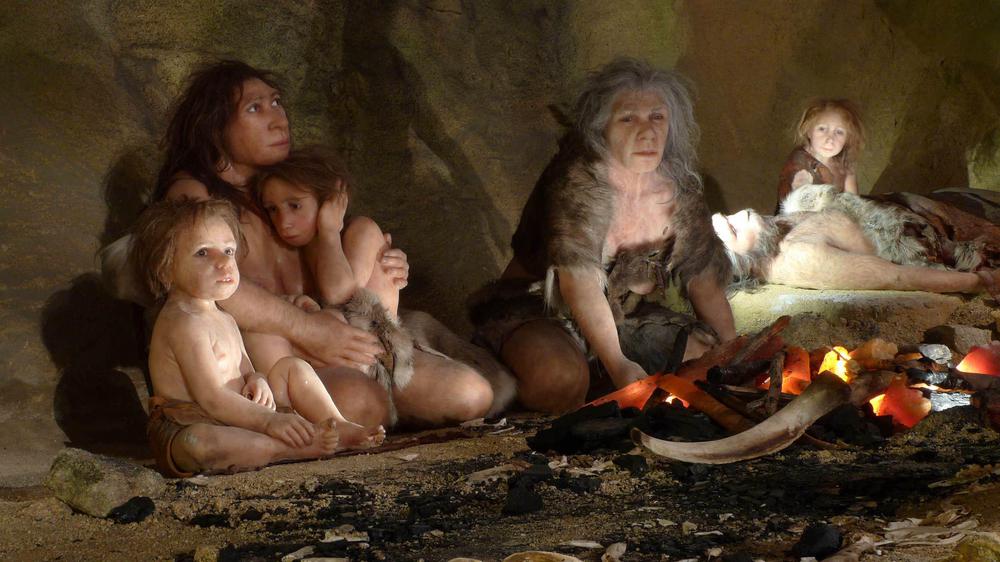This article focuses on the ancient cultures that flourished in prehistoric Georgia, a country with a deep historical legacy. We trace the evolution of these cultures from the early Stone Age to the Iron Age, highlighting key developments and cultural aspects that defined these eras. Emphasizing factual accuracy, this narrative aims to offer a comprehensive understanding of Georgia's ancient past.
The Stone Age: Foundations of Georgian Ancient Cultures
The Stone Age in Georgia, encompassing the Paleolithic, Mesolithic, and Neolithic periods, sets the stage for the country's early cultural development. In the Paleolithic era, evidence suggests small nomadic groups roamed the region, living primarily as hunter-gatherers. The Mesolithic period witnessed subtle shifts in tool-making techniques and living patterns, possibly influenced by climatic changes.
Transitioning into the Neolithic era, ancient Georgian cultures began to exhibit significant advancements. The introduction of agriculture around 6000 BCE marked a profound shift. Communities started to settle, leading to the formation of early villages. Pottery from this period, often decorated with intricate designs, indicates a blossoming of artistic expression and the beginnings of more complex societal structures.
The Bronze Age: Emergence of Distinct Cultures
The Bronze Age (approximately 3500-1200 BCE) in Georgia is a period of considerable cultural and technological development. This era is characterized by the use of bronze tools and weapons, signifying advanced metallurgical knowledge. The most notable cultural group of this period is the Trialeti culture, which thrived around 1500 BCE. Their distinct burial practices, involving large kurgan-type mounds, point to sophisticated spiritual beliefs and social hierarchies.
Another significant aspect of this era is the development of proto-urban centers, suggesting an increase in trade and economic activities. The Bronze Age cultures laid the groundwork for more complex societal structures, setting the stage for the developments in the subsequent Iron Age.
The Iron Age: Cultural and Sociopolitical Complexity
The Iron Age (approximately 1200-600 BCE) in Georgia is marked by increased sociopolitical complexity and cultural diversity. This period saw the introduction of iron tools and weapons, leading to significant changes in agriculture, warfare, and daily life. The Iron Age cultures in Georgia are often associated with the development of early state formations, such as the Kingdom of Colchis in western Georgia and the Kingdom of Iberia in the east.
Culturally, this era is characterized by a rich tapestry of artistic expression, seen in pottery, metalwork, and architecture. The religious practices of these cultures, while not fully understood, appear to have involved a pantheon of gods and ritualistic ceremonies, as indicated by archaeological findings.
The Role of Ancient Georgian Cultures in Regional History
The ancient cultures of prehistoric Georgia played a crucial role in the broader history of the Caucasus and the Near East. Their strategic geographical position made them a crucial crossroads for cultural and trade exchanges between Europe and Asia. The metallurgical advancements and cultural developments in Georgia influenced neighboring regions, showcasing the significance of these ancient cultures in the wider historical context.
Cultural Practices and Artistic Expressions in Ancient Georgia
In ancient Georgian societies, cultural practices and artistic expressions were not merely aspects of daily life; they were integral to the identity and continuity of these communities. Artifacts such as pottery, jewelry, and metalwork reflect a high level of craftsmanship and aesthetic sense. The pottery from these periods, often found in archaeological sites, displays a variety of styles and techniques, suggesting a rich tradition of ceramic art.
Jewelry made from gold, silver, and semi-precious stones, found in burial sites, indicates the presence of skilled artisans and a society that valued personal adornment. Moreover, these artifacts provide insights into the trade networks of ancient Georgia, as some materials were likely imported from distant regions.
Metalwork, especially in the Bronze and Iron Ages, showcases advanced technological skills. The discovery of weapons and tools made from bronze and later iron suggests a society adept in metallurgy, which would have significantly impacted agricultural practices and warfare.
Societal Structures and Hierarchies
The societal structures of ancient Georgian cultures evolved significantly from the Stone Age to the Iron Age. In the Neolithic period, the establishment of settled communities led to the development of more complex societal structures. The presence of large communal buildings and sophisticated settlement layouts in archaeological sites indicates a degree of social organization and possibly communal decision-making processes.
In the Bronze Age, the emergence of burial mounds and fortified settlements points to a stratified society with distinct social hierarchies. The elaborate grave goods found in kurgans suggest the existence of a ruling class or nobility, while the scale of fortifications indicates organized labor and possibly centralized control.
The Iron Age saw the emergence of early state formations, with clearer evidence of hierarchical social structures. The differentiation in burial practices and the presence of monumental architecture imply a society with a defined ruling class, religious leaders, and skilled artisans.
Religious Beliefs and Rituals
While much about the religious beliefs and rituals of ancient Georgian cultures remains shrouded in mystery, archaeological evidence provides some clues. The existence of cultic structures and ritualistic objects in various archaeological sites indicates that religion played a significant role in these societies.
The nature of religious practices during the Stone and Bronze Ages is largely speculative, but it likely involved animistic or nature-based worship. The Iron Age, with its more complex societal structures, possibly saw the development of a more organized religious system, with a pantheon of gods and ritual practices. This period might also have witnessed the influence of neighboring civilizations, such as the ancient Persians and Greeks, on local religious beliefs.
Conclusion
In conclusion, the ancient cultures of prehistoric Georgia present a captivating narrative of human progress and cultural development. From the early Stone Age societies to the complex Iron Age civilizations, Georgia's ancient history is a testament to the resilience and creativity of its early inhabitants. The ancient cultures of prehistoric Georgia were characterized by rich cultural practices, artistic expressions, and complex societal structures. These societies evolved from simple hunter-gatherer communities to sophisticated civilizations with advanced metallurgical skills, artistic traditions, and social hierarchies. Religion played a pivotal role, although its specifics remain largely unknown.

 Ancient Echoes
Ancient Echoes
 Prehistoric Georgian Archaeological Sites
Prehistoric Georgian Archaeological Sites
 Bronze Age in Georgia
Bronze Age in Georgia
 Early Inhabitants of Georgia
Early Inhabitants of Georgia




